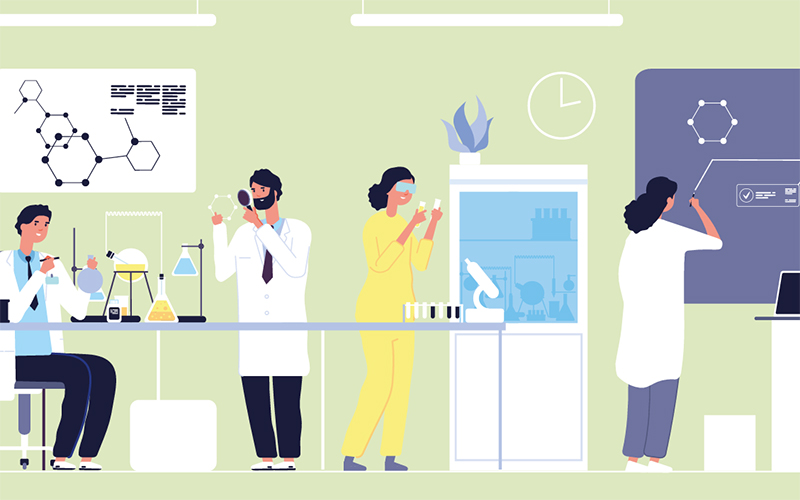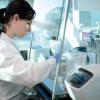Rae Wallace talks about her experiences of a point-of-care testing (POCT) placement and entry into a career in biomedical science.

Everyone has a different journey when becoming a biomedical scientist – it’s one of the many reasons why the career is so interesting. As a relatively new biomedical scientist, I love hearing the history of why and how my colleagues decided to become biomedical scientists, or chatting to students to see what specialism they are interested in joining after graduation. I have just celebrated my first year of being a biomedical scientist, which makes me reflect and appreciate the journey that brought me to the position I have wanted to be in since I was a 14-year-old girl.
Applying for a placement
It can be overwhelming to read about accreditation, portfolios, and the different branches of biomedical science when first looking into how to become a biomedical scientist within the NHS. I was lucky to be well informed by university open days and finding the IBMS website at an early stage, before picking where
I wanted to study. Abertay University was my first choice – it had the opportunity to complete an 18-week hospital laboratory placement.
Come the third year of university, I was applying for that placement position. Working in biomedical science you come to know the specialisms, but as an “outsider” with little experience, how do you pick? I knew I was strong in chemistry (my top choice), but when
I got the confirmation email stating “Congratulations! Your placement will be in clinical chemistry – subdivision Point-of-care testing” I didn’t know what to expect. Little did I know, when I walked in on my first day of placement, the rest of my career was paved for me.
Work on my feet
POCT showed me how wide a biomedical scientist’s scope of practice can be. Like my peers in other divisions, I did some bench work and typed up portfolio evidences, but I was also able to have time out of the lab. I was on wards taking part in multi-disciplinary meetings, changing gas analyser cartridges, or rolling out the newest bedside tech that works faster and better than its predecessor. Even though the POCT day cannot be planned fully, it was still filled with learning to ensure I could achieve the highest level of fitness to practice. I was also given the experience of learning how to work on my feet and saw how POCT is bridging the gap between the labs and wards. Spending time close to service users meant I could see the impact biomedical scientists have on patient care first-hand. This was, and still is, a huge motivator in my career.
As you complete your registration portfolio you learn how to be a biomedical scientist. However, having a good support network and motivators around you shows you how good being a biomedical scientist is. I had an excellent training team who supported me throughout placement along with the POCT team. The team consisted of a Band 3 medical laboratory assistant, a rotating biochemistry Band 5 biomedical scientist, one Band 6 specialist biomedical scientist, a Band 7 senior, a Band 8 service manager, a training officer and, of course, me. I really felt like I had become a member of the team. Having these interactions between different bandings showed me how we are all cogs in a machine that is required for the big picture.
High level of knowledge
Following my placement, my time in POCT was far from over. I was offered an honours project with the POCT team, which I gladly accepted. Through this,
I created several e-learning training modules for POCT devices. Preceding the modules (using a gas analyser as an example), training was completed face to face, with three questions being emailed to the service users afterwards. Once the service users answered the three questions, they were given their log-in barcode through the internal mail. While this was working, it took time, and knowing who was competent or when their competency ran out was a difficult challenge to keep up with.
The e-learning modules made competency for service users easier to maintain, took less time for service users to complete, and gave the POCT team more time to focus on other tasks. Writing these modules required a high level of knowledge of both the analysers but also of what the service users' needs are, so I completed a few questionnaires beforehand. One of these analyser modules included a direct ion selective electrode (ISE) method of determining electrolytes, which I brought forward to complete an audit and mini study as a biomedical scientist now in biochemistry. Not only was I completing my honours project in POCT, I also had gained a job as a medical laboratory assistant covering both haematology and biochemistry. This gave me a taste of how the different divisions operated.
“Having a good support network shows you how good being a biomedical scientist is”
When I started my placement in third year, my grades were nothing to sing about. I am severely dyslexic and struggle with exams. Placement, however, was a different story – I expanded on the sample journey and pathological condition section of the registration portfolio to complete two of the three submissions required for that university semester. I also found my love of public speaking and completed a presentation surrounding the pathological condition to complete my submissions. My grades went up due to the different form of learning and assessment, allowing me to graduate with first-class honours.
The best career decision
I graduated last year with a job as a biochemistry biomedical scientist already lined up. Already being registered with the Health and Care Professions Council, having a completed portfolio, and already having my bearings about the laboratory, all gave me an incredible advantage. There was a lot to grasp at the start of my new position. I was, and still am, thoroughly impressed with the trainee biomedical scientists around me, some of whom had no lab experience outside of university.
I was the first POCT placement student in NHS Tayside back in 2021. Now they have taken on a student each year since.
I would really recommend taking on a student in your laboratory; you may be surprised at how proactive they can be. If you are a student, try finding a placement opportunity near you; it’s the best career decision I have ever made.
Rae Wallace is a Biomedical Scientist (Biochemistry) at Ninewells Hospital, Dundee
Image credit | Shutterstock




